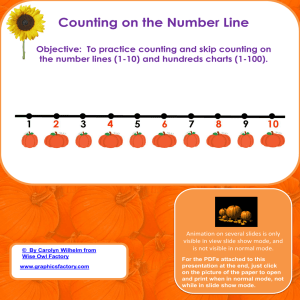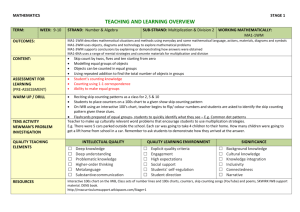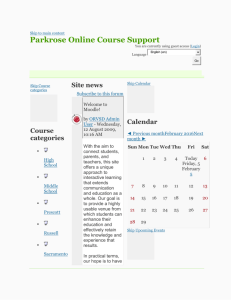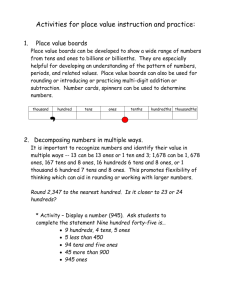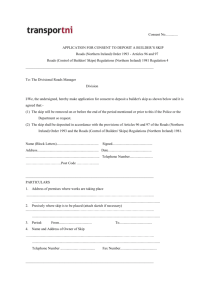APA 5th Edition Template
advertisement
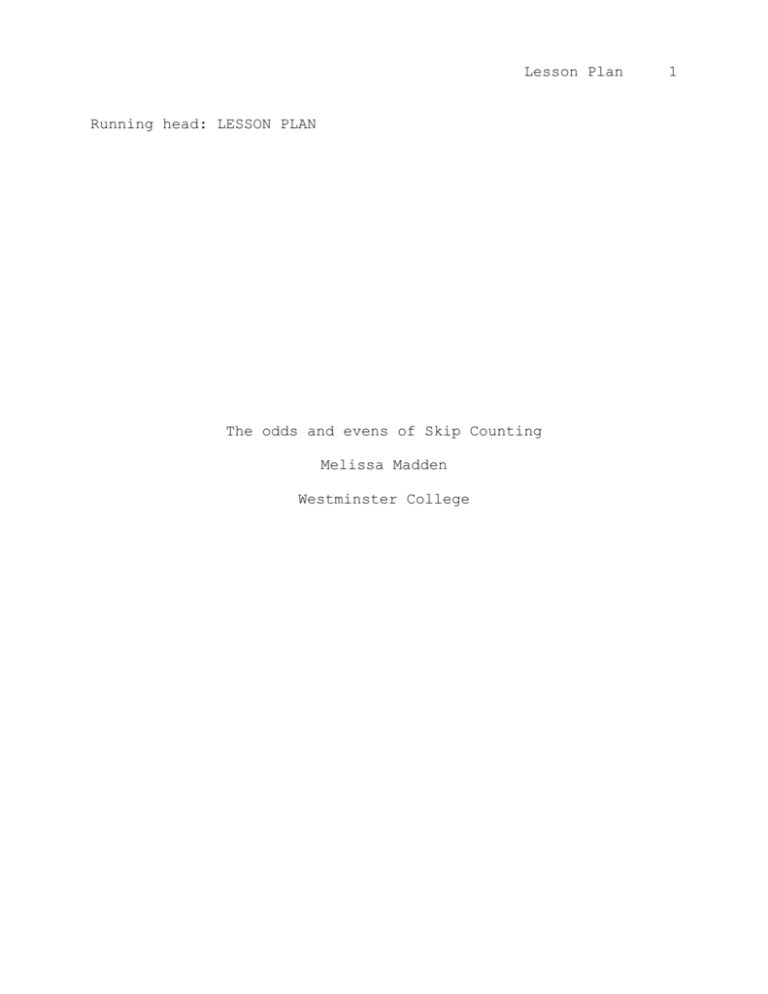
Lesson Plan Running head: LESSON PLAN The odds and evens of Skip Counting Melissa Madden Westminster College 1 Lesson Plan The odds and evens of Skip Counting First grade Length of lesson 30 to 40 minutes Math Utah State Core Standards Standard 2 Students will identify and use number patterns and properties to describe and represent mathematical relationships. Objective 1 d. Use patterns to establish skip counting by, twos, fives, and tens. Standard 3 Students will understand simple geometry and measurement concepts as well as collect, represent, and draw conclusions from data. Objective 3 Collect, organize, and represent simple data. a. Collect and represent data using tables, tally marks, pictographs, and bar graphs. b. Describe and interpret data. 2 Lesson Plan Specific Mathematical Objectives for this lesson The objectives for the students to gain out of this lesson are to be able to skip count by fives and understand the difference between even and odd numbers. Personal Objectives I would like the students to gain a sense of math and being interested in it. Key vocabulary/Symbols The key vocabulary is skip counting, odd numbers, and even numbers. Materials Books about skip counting and/or odd and even numbers Geo blocks or other manipulatives for counting Lined paper Pencils Phase 1: Exploration and Explanation The way I will assess the students’ prior knowledge is to ask them “Does anyone know what skip counting means?” Depending on the answer I receive from the students, it will guide me in the direction of what needs to happen next. If the students’ understand what skip counting is then I will ask for an example. 3 Lesson Plan After I take an example from a student we will go on to read the poems. If the students do not understand what skip counting is I will say “Let’s think about what skip counting might be as we read these poems.” As I read the poems I will ask “Does anyone know what skip counting is yet?” If the students understand what skip counting is I will ask “How does the poem ask us to count?” After reading the poems I will ask the students “What numbers did we skip count by?” If most of the class knows what the poems said we were skip counting by then we will go on to me modeling a skip count set with the manipulatives. After I model it for the students then I will have them go back to their seats and try it. As students go back to their seats I will instruct some students from each desk grouping to go and get the manipulatives for their group. Phase 2: Guided Learning The students will practice at their seats with a partner working on what skip counting looks like using manipulatives. I will walk around the desks and observe what the students are doing, coaching and asking question when appropriate. After about 15 minutes I will reengage them by asking “What kind of pattern do even and odd numbers have?” If none of the students know what odd or even numbers are we will get back in a whole group and go through a few. When the students go back to work 4 Lesson Plan they will again work with a partner and figure out what odd and even number skip counting looks like with manipulatives. After about 5 minutes I will gain their attention by asking “What have you found out about odd and even numbers?” Then the students will put the manipulatives away and bring out the paper and pencils. Phase 3: Independent Practice/Assessment The students will have a piece of paper and pencil to write out the numbers in the skip counting set of five and odd or even sets up to 20. Accommodations for one of the students will be that he is allowed to use the manipulatives still. I will be assessing that the students can skip count by fives and know odd or even numbers up to 20. If some students think that they know more then I will encourage them to write more. Developmentally Appropriate Practice This lesson is DAP because by the end of first grade the students need to know how to skip count by twos, fives, and tens according to Utah State Core Standards. The assessment style here is a work sample and observation by the teacher which is the DAP way for assessment. 5
